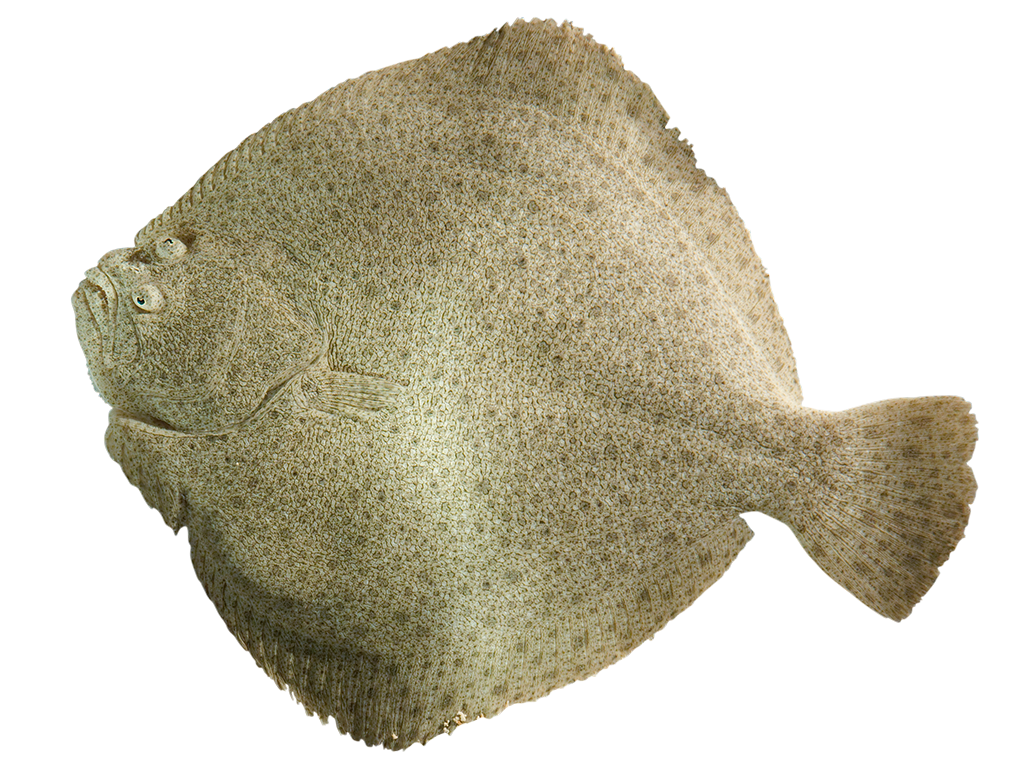Turbot
Scophthalmus maximus

Well-camouflaged against the sand
Turbot can be hard to see. Look carefully for dark spots on the top side of its body, which is a sandy colour. Turbot is a flatfish which camouflages itself well against a sandy seabed.
Like all flatfish, when a turbot fry hatches it looks like a “normal” fish, with one eye on each side of its head. But after a while, a transformation occurs. One of the eyes “migrates” across to the other side of the body, and the turbot lives the rest of its life like a flatfish.

Photo: Yvan-CC-BY-NC-SA
Called ”water pheasant”
Many people like eating turbot. In the Roman Empire, turbot was as popular to eat as a bird called the pheasant. That is why the turbot was called the “water pheasant”. In France people still use that name today.
The turbot spawns from April to August. Like female cod, female turbot can lay up to 15 million eggs each.

Photo: Johanna-Rylander-Malmö-Museer
Distribution in Sweden

Along the entire west coast and in the Baltic up to the Sea of Åland.
White marking = Distribution
Threat based on the Red List

Trade regulations
CITES: Not listed.